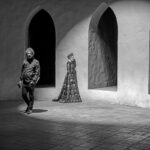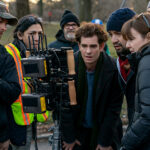
Benoit Richard on controlling the lighting for Ghostbusters: Afterlife
Released in November 2021, supernatural comedy Ghostbusters: Afterlife continues the beloved spooky story line of the first two classic movies. Directed by Jason Reitman and shot by Director of Photography, Eric Steelberg, this sequel’s story is set in Oklahoma. The film itself was shot quickly in various locations and sound stages across the Province of Alberta, Canada from July to October 2019.
The crew worked in Calgary and neighboring communities, also working in Crossfield, Beiseker, and Drumheller over several months of principal photography. To handle the fast-paced needs of the production, Key Lighting Programmer Benoit Richard used an extensive High End Systems Hog 4 control system to network the lighting control for the production.
While much of the film’s equipment was provided locally in Canada, additional lighting equipment along with lighting control solutions were provided out of Los Angeles, explains Richard. “MBS Equipment Company filled a truck with Arri SkyPanels and a bunch of other lights that we couldn’t get in Canada, and I sent my usual package at the time—four Rack Hogs, my Full Boar 4 console, and we also brought a Road Hog for our Canadian Rigging Programmer, Erin Nelligan, to use when preparing sets for us.”
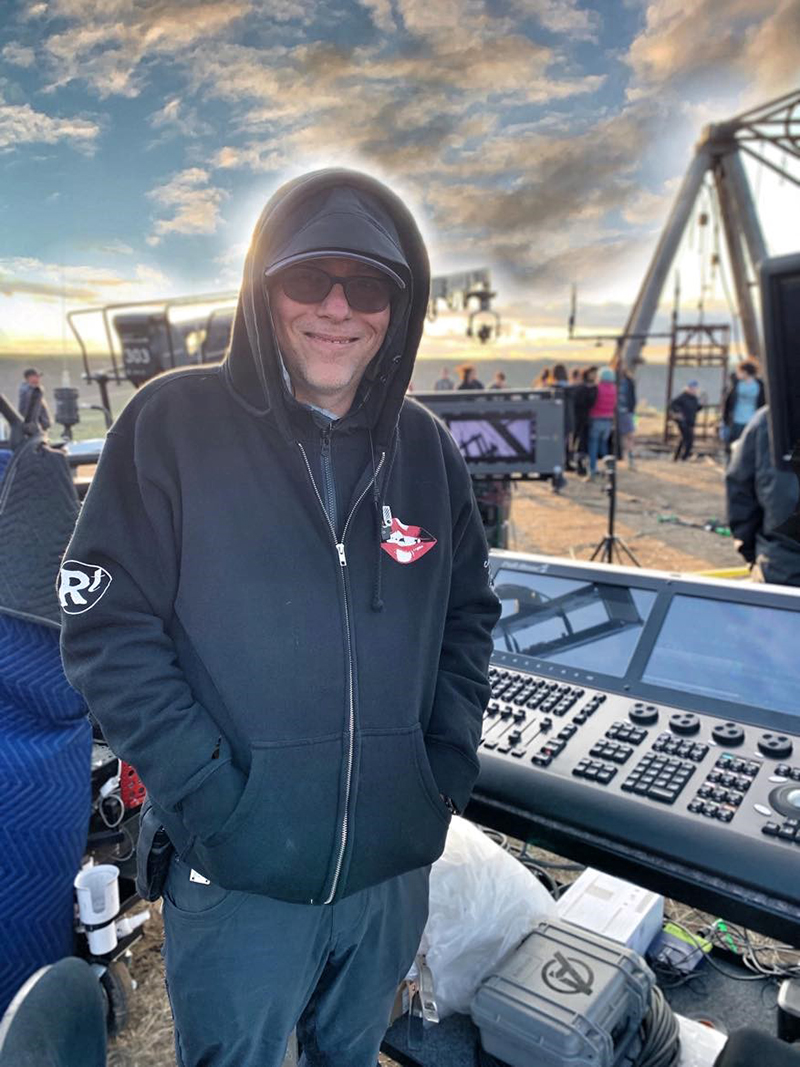
On the Road
According to Richard, the prep was quite short, and the crew went straight into a camera test as soon as he arrived. Simultaneously, he was teaching the Canadian rigging crew the ways of Hog control. “With Ghostbusters, we turned some heads on how to do modern lighting control for movie sets,” he says. “The show was scheduled as very location front heavy, which meant that out of the 14 weeks of shooting, we were going on the road for the first eight weeks. Shooting on location for that long gave the rigging crew more time to prep the three sound stages, which were turned over for different sets a few times throughout filming.”
For the location work, Richard’s Rack Hogs leapfrogged from one location to another. “We always had a point for our big location rigs to be fed from the Rack Hogs, like the Spinners Diner, the Sheriff’s Office, and the Rust City Refinery, where the kids meet Muncher for the first time.”
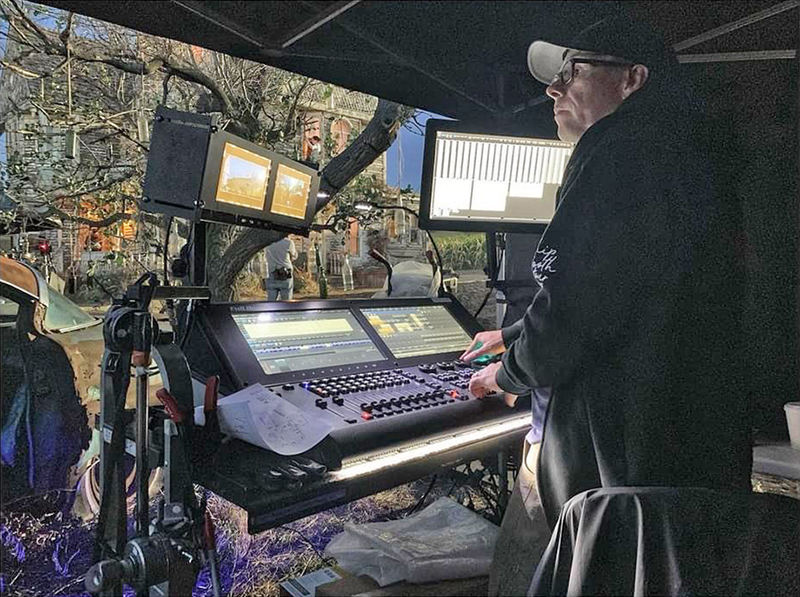
Control Networking
Richards lays out his network for the lighting system, explaining, “We ran dual Gigabit networks to feed sACN to DMX nodes at all the distros, and then we ran HogNet as a separate network so I could connect my Full Boar anywhere on set. The same networking concept was used at the stages. Most productions love to do ‘splinter shooting,’ where they ask for the ‘C’ camera to go to stage 2 to get a quick insert, while we are still shooting on Stage 1. In my little room, I was able to have a separate console logged into the server on the other stage and could control both sets at the same time.”
In addition to SkyPanels and other traditional film lighting fixtures, several HES SolaFrame Theatre moving light fixtures were used on stage. Richard explains, “Their low noise was certainly one of the main intentions for their use—as it made our sound mixer very happy! They were primarily used as backlights on the actors, or to front light the Farmhouse. When there was paranormal activity going on, we strobed the SolaFrame as well, which was great. They were also used on the famous Gozer Staircase set as backlights, and to create motion for the all the Ecto-1 driving process work. The SolaFrame’s quick repositioning was very important, especially in the middle of a stage that didn’t have perms [overhead walkways that are common on Hollywood stages]. Since we couldn’t send someone up to focus lights and couldn’t bring in lifts on a dirt/grass floor, using movers was a very handy tool to have in our arsenal.”
DP Steelberg communicated his lighting wishes to Gaffer Mike Ambrose, who would then relay instructions to Richard. Additionally, an onset earpiece system and monitors allowed the programmer to listen and watch the actors’ performances and trigger any dialog or action-based cues.
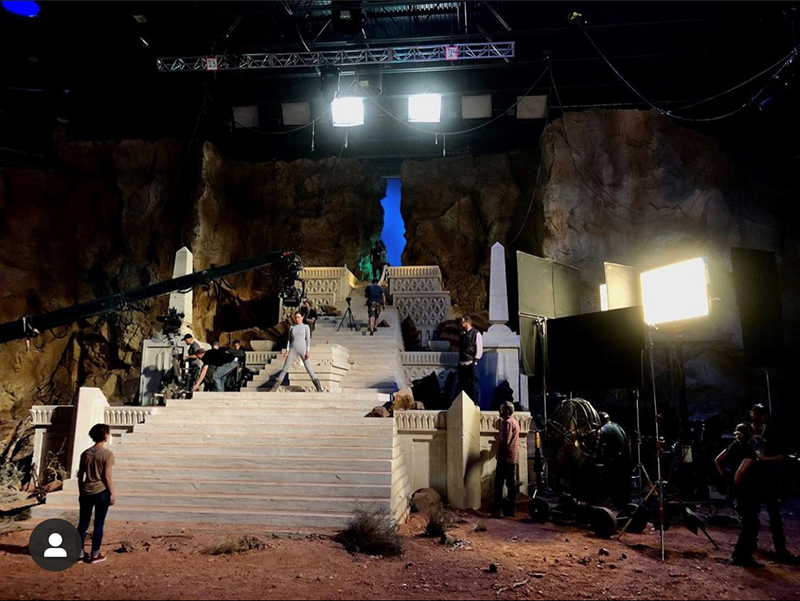
Always in Control
Asked why he prefers the Hog 4 platform for film programming work, Richard replies, “I think one of the most important concepts of the Hog hierarchy is the port number system, which allows multiple servers to be interconnected. Let’s say that on Stage 1, the server port number is 6601, then on stage two the other server is on port 6602, etc. Here’s the cool thing—if you’re all connected—especially at these movie lots that have dark fiber lines, we can interconnect HogNet between stages that can be far apart from each other, and that way, whenever a rigging crew is setting up a new rig on another stage, the rigging programmer can setup in a central office and use a Road Hog on Port 6601 and Hog4PC on Port 6602 to control multiple stages at the same time. It’s the same thing for the main unit programmer, with a splinter camera heading over to a different stage for a ‘quick pop’… for me, that capability is amazing!”
Richard appreciates that by using HogNet as the network backbone with multiple independent servers, he gets total control over each stage in a quick and straightforward manner. “With this concept, every show file remains independent, which means you can start at Channel 1 on every stage. I think it’s way better to have multiple servers that are independent but are still able to communicate with the lighting console because of the port system.”
Richard picks the Full Boar over the full-sized Hog 4 because he can pick it up himself. He also uses a 22” Elo monitor as his third screen, always showing the output window or the plot view. “On the Full Boar 4, my left window has the cue list on the top half and the bottom half is the programmer. And on the right side I’ve got groups on the left, colors on the right and intensities on the bottom. We don’t really deal with beams that much, but sometimes I’ll bring up the beam directory when needed. It’s laid out essentially the same way I would for a rock show.”
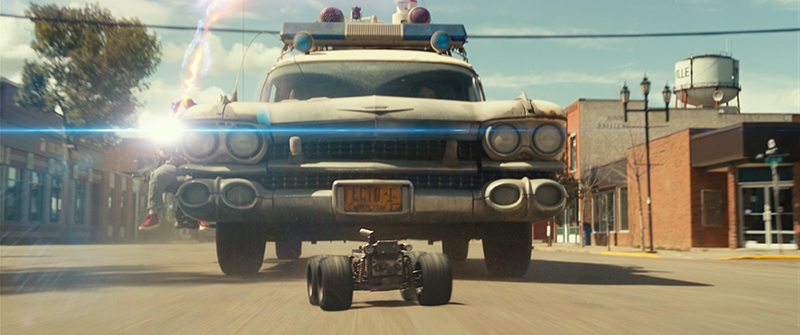
One of the Jobs of a Lifetime
As a Ghostbusters fan, Richard is quick to thank Gaffer Michael Ambrose for getting him this gig. “Nothing would have been possible without Michael calling and offering one of the jobs of a lifetime,” he states. “I was a teenager when the original film came out in 1984; when he asked, of course I said ‘yes!’ For me, whether we were doing special lighting gags to represent paranormal ghost activity or enhancing the iconic proton packs on the back of the original Ghostbusters, it was so cool; I’m just very proud and happy to have worked on this show. We had such a great team, made some great new friends, and my seven-year-old daughter loved the show so much that we saw it twice!”
Lighting Team for Ghostbusters: Afterlife
- Director of Photography: Eric Steelberg
- Gaffer: Michael Ambrose
- Key Lighting Programmer: Benoit Richard
- Rigging Gaffer: Todd Turner
- Rigging Console Programmer: Erin ‘Nelly’ Nelligan
- 2nd Unit Programmer: Marc-Antoine Theriault-Daunais
- Set Lighting Technician:Peter Markowski
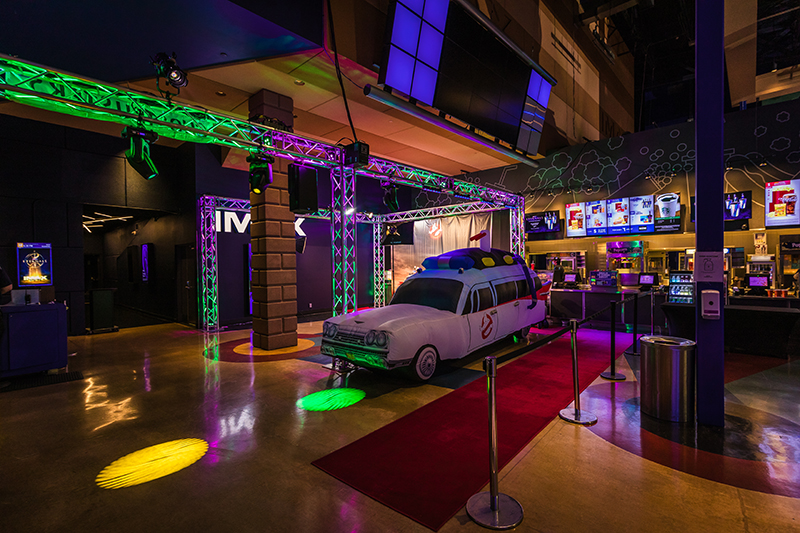
Cast/Crew Screening and Opening Celebrations
Having filmed Ghostbusters: Afterlife in the Calgary and wider Alberta areas in Canada, the production team returned for a special cast/crew screening at the local Cineplex Odeon a few days before the film’s official release in November. A variety of ADJ lighting fixtures were used to illuminate props and displays that transformed the venue’s foyer for the special occasion. These were then left in place to be enjoyed by the public throughout the movie’s opening weekend.
Dustin Milne, owner of local production company Digital Media Integrations, was one of the many people from the Calgary area who were involved with the filming of Ghostbusters: Afterlife. Having worked in the Props Department, Milne was invited by the film’s director, Jason Reitman, to produce his official wrap party. An avid Ghostbusters fan, Milne happened to own several Ghostbusters-themed event props that he uses to create a show-stopping Halloween display outside his house each year, which were ideal for the event. These combined with lighting from ADJ created the perfect atmosphere for the wrap party and Milne and his company the right choice for producing the official Alberta cast/crew screening of the movie and opening weekend celebrations.
Together with his team from Digital Media Integrations, Milne created a floor-standing structure from Global Truss America trussing in the foyer of the Cineplex Odeon outside the auditorium used to show Ghostbusters: Afterlife. With a red carpet leading up to it, this supported a custom printed backdrop from the movie and created a space where attendees could have a photo taken before going in to watch their screening.
The truss structure was illuminated using ADJ Mega Hex PAR LED-powered wash fixtures, which caused it to glow vividly in ghostly green and purple colors. Each of these compact PAR units feature five 6W 6-in-1 Hex (red, green, blue, amber, white, UV) color mixing LEDs. “The Mega Hex PAR is one of our staple fixtures;” states Milne. “We primarily use them for truss warming and they are just perfect for it. The housing is small, so they fit nicely inside, but the output is bright enough to give the truss a vibrant glow. Having the UV chip included makes them great for special events like Halloween and, of course, this Ghostbusters production.”
Mounted on the truss structure, they used four of ADJ’s Focus Spot THREE Z 100W LED moving heads to add movement and gobo projections, creating a party atmosphere to get everyone excited as they came in to watch the movie. They also used a number of Ultra Hex Bar 6 linear LED fixtures. Each featuring six 10W Hex color LEDs, these lights offer a 40˚ beam angle. For the Ghostbusters event, they were used for ambient lighting and also to illuminate themed props, including an inflatable replica of the iconic Ectomobile.
Another prop Milne and his team brought in for the event was a 25’ Stay-Puft Marshmallow Man inflatable, which was positioned on top of the concession stand. This was illuminated by a pair of ADJ Encore Profile Pro Color ellipsoidal fixtures, while further units were used to project custom Ghostbusters gobo patterns onto the floor of the foyer.
The weekend before, Milne and his team were also tasked with creating the same atmosphere in Fort Macleod, Alberta, when a special preview screening of Ghostbusters: Afterlife was held at the Empress Theatre. The town’s historic Main Street appears as one of the locations featured in the movie. Across from the theater the Digital Media Integrations team setup a truss with enough ADJ fixtures to light up the whole street and project the Ghostbusters logo onto the side of the theater.
“Working with the people from Sony Pictures has been awesome,” sums up Milne. “All the producers and the marketing department were super wonderful, and I think the premiere events surpassed their expectations of what they would look like. I know that Jason Reitman really wanted this film to have a theater release, he didn’t want it to come out on streaming during Covid, which is why it kept getting pushed back. He’s a big fan of grabbing the popcorn and ‘going to the movies’. So, we wanted to bring that kind of ethos to this event; really make a memorable experience, which I think we achieved. Coming out of the last couple of years that we’ve all been through, it was good to see so many people out having a good time, smiles on their faces, taking pictures and enjoying themselves! The movie had a phenomenal opening weekend, so—all in all—it was a really good event.”
